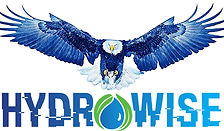LoRaWAN (a vendor-managed solution; see part 1) is ideal for monitoring applications where sensors need to send data only a couple of times per day with very high battery life at very low cost. Cellular IoT, on the other hand, works best for agricultural applications where sensors are required to send data more frequently and irrigation valves need to be turned on/off. Low-Power Wide-Area Networking (LPWAN) technologies need gateways or base stations for functioning. The gateway uploads data to a cloud server through traditional cellular networks like 4G. Symphony Link has an architecture very similar to LoRaWAN with higher degree of reliability appropriate for industrial applications. The power budget of LTE Cat-M1 9 (a network operator LPWAN) is 30% higher per bit than technologies like SigFox or LoRaWAN, which means more expensive batteries are required. Some IoT technologies like LoRa and SigFox only support uplink suited for monitoring while cellular IoT allows for both monitoring and control. LTE-M is a better option for agricultural weather and soil moisture sensor applications where more data usage is expected.

NB-IoT is more popular in EU and China and LTE Cat-M1 in the U.S. and Japan. T-Mobile deployed an NB-IoT network in the U.S. recently, following a pilot project in Las Vegas. Verizon and AT&T launched LTE Cat-M1 networks a couple of years ago and their IoT-specific data plans are available for purchase. Verizon and AT&T IoT networks cover a much greater area than LoRa or Sigfox. An IoT device can be connected to AT&T’s network for close to $1.00 per month, and to Verizon’s for as low as $2 per month for 1MB of data. A typical sensor message generally falls into 10-200 bytes range. With the overhead associated with protocols to send the data to the cloud, this may reach to 1KB. This can be used as a general guide to determine how much data to buy from a network operator.
What the Future Holds
Many startup companies are currently focused on the software aspect of IoT, and their products lack the sensor technology. The main problem they have is that developing good sensors is hard. Most of these companies will fail before batteries of their sensors die. Few will survive or prevail in the very competitive IoT market. Larger companies who own sensor technologies are more concerned with the compatibility and interoperability of these IoT technologies and will be hesitant to adopt them until they have a clear picture. It is going to take time to see both IoT and accurate plant and soil sensors in one package in the agriculture market.
With the rapid growth of IoT in other areas, there will be an opportunity to evaluate different IoT technologies before adopting them in agriculture. As a company, you may be forced to choose specific IoT technology. Growers and consultants should not worry about what solution is employed to transfer data from their field to the cloud and to their computer or smart phones, as long as quality data is collected and costs and services are reasonable. Currently, some companies are using traditional cellular networks. It is highly likely that they will finally switch to cellular IoT like LTE Cat-M1. This, however, may potentially increase the costs in some designs due to the higher cost of cellular IoT data plans.
Citation:
Osroosh, Y., Adhikari, D., 2018. Using the Power of IoT to Improve Irrigation Water Management. Irrigation Today, April: 6-7.

